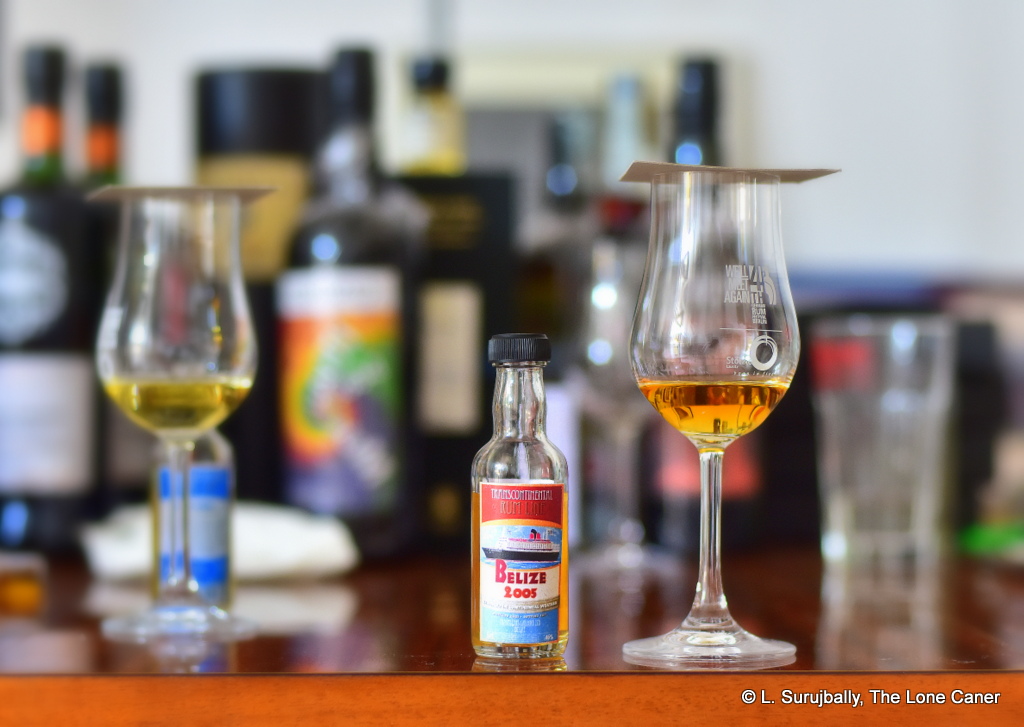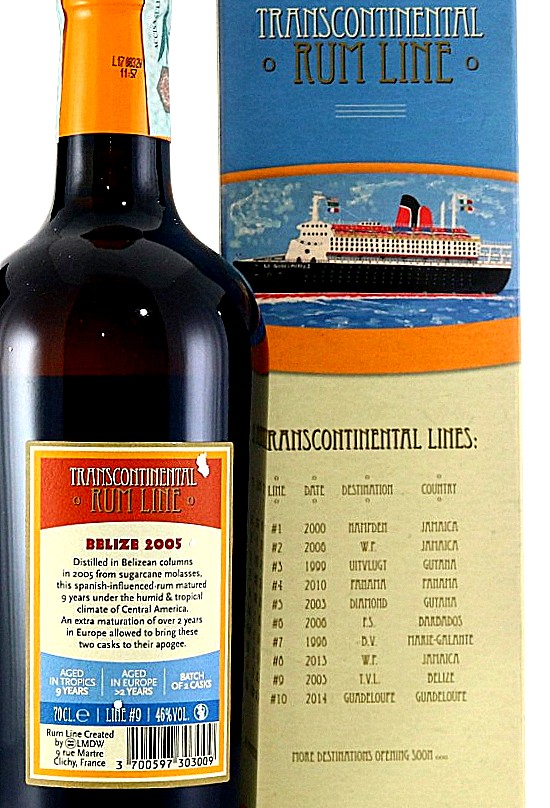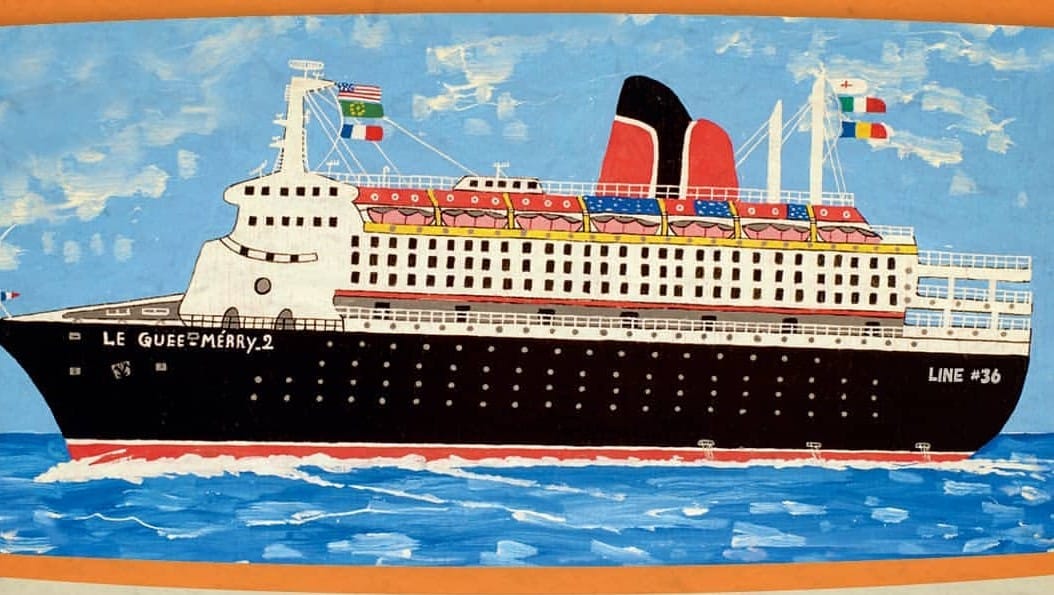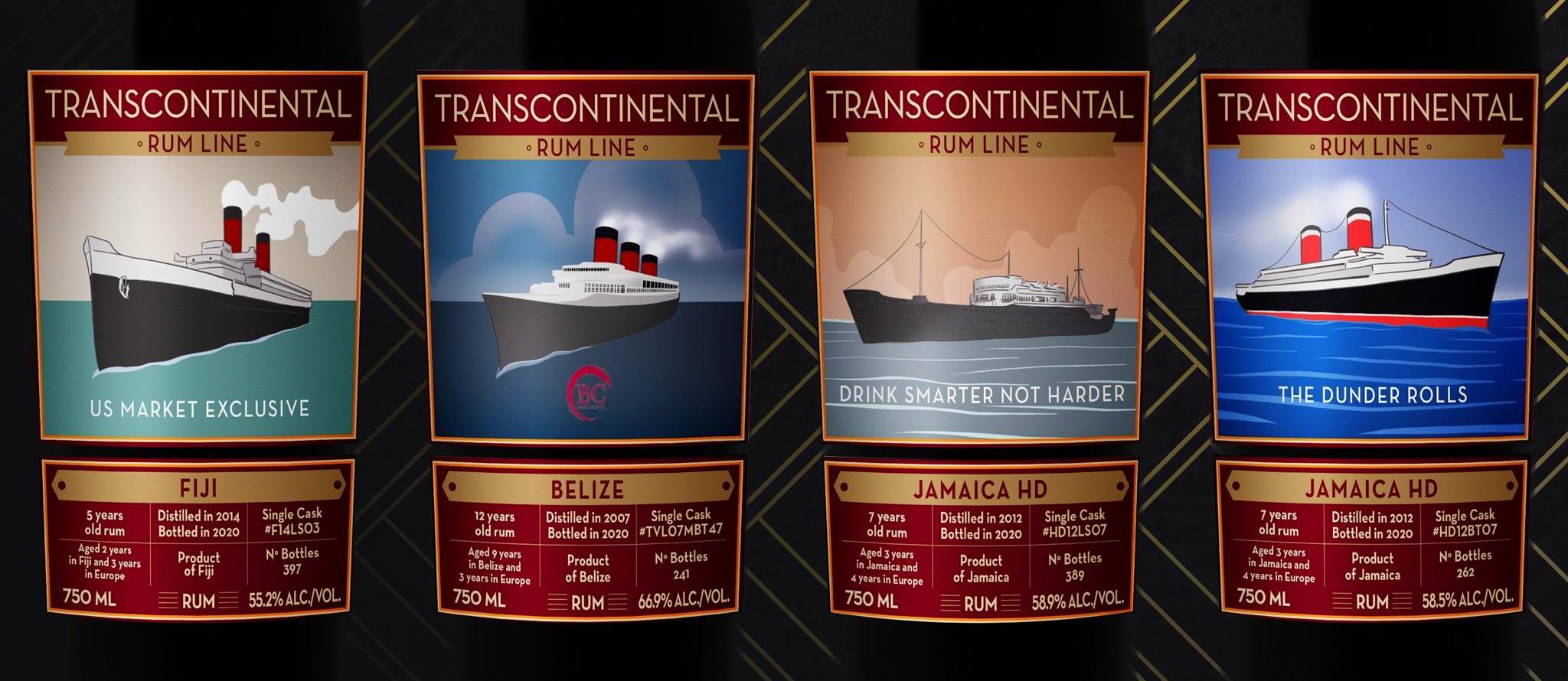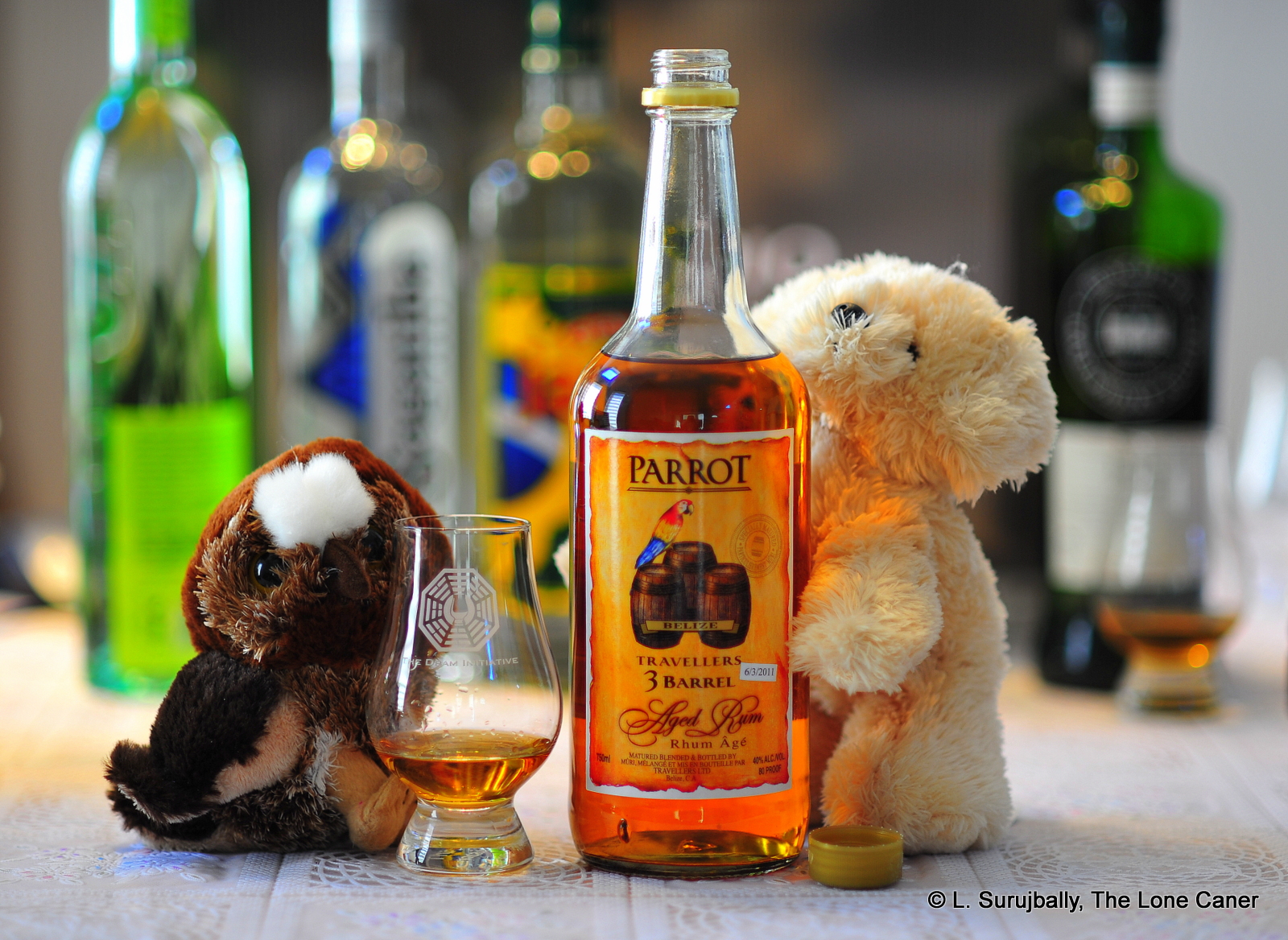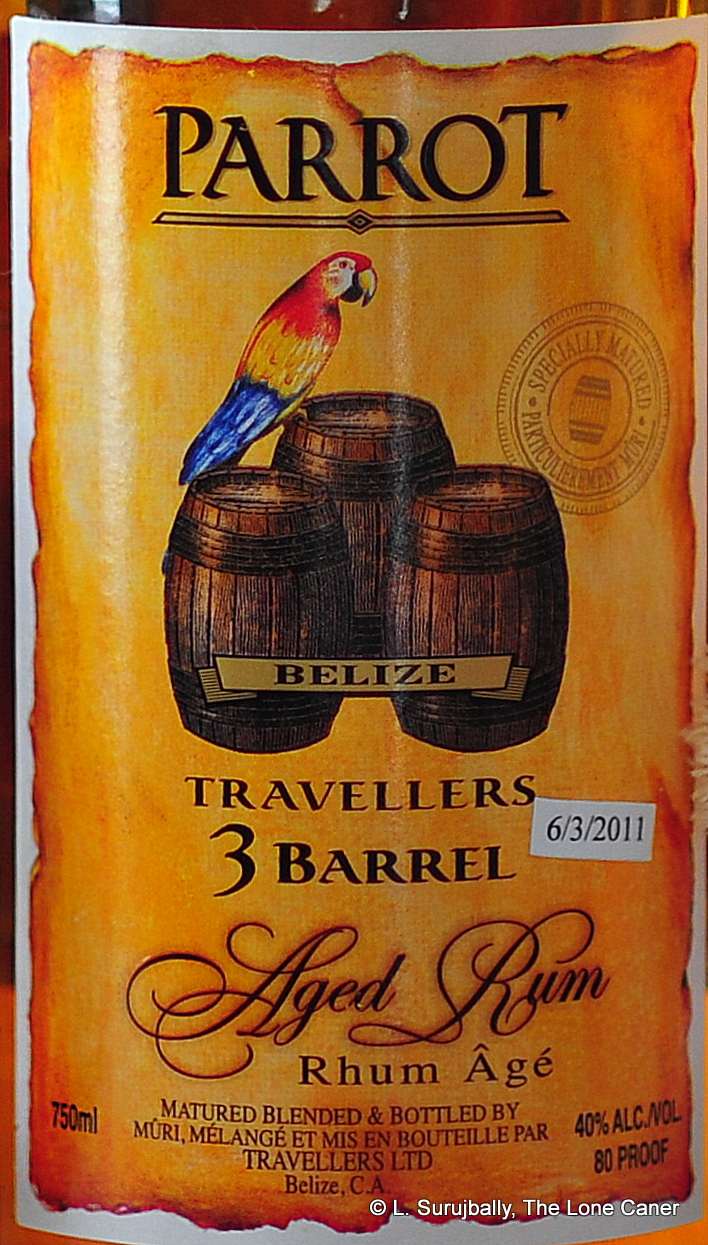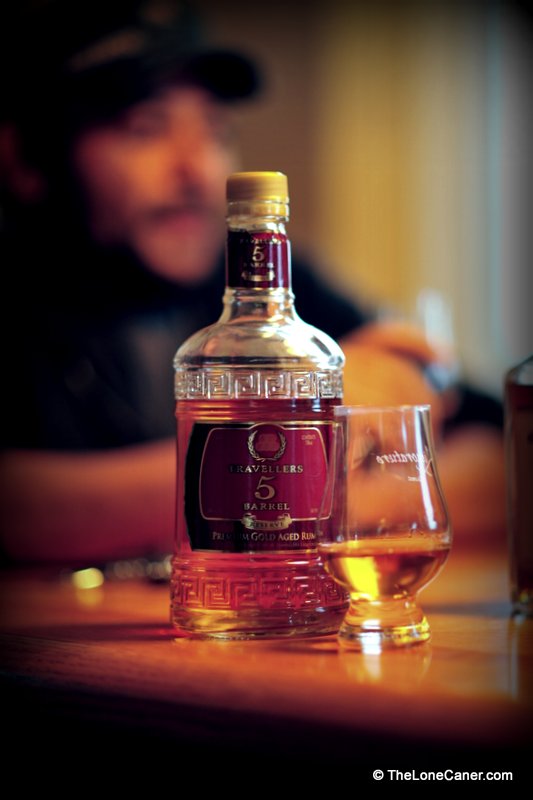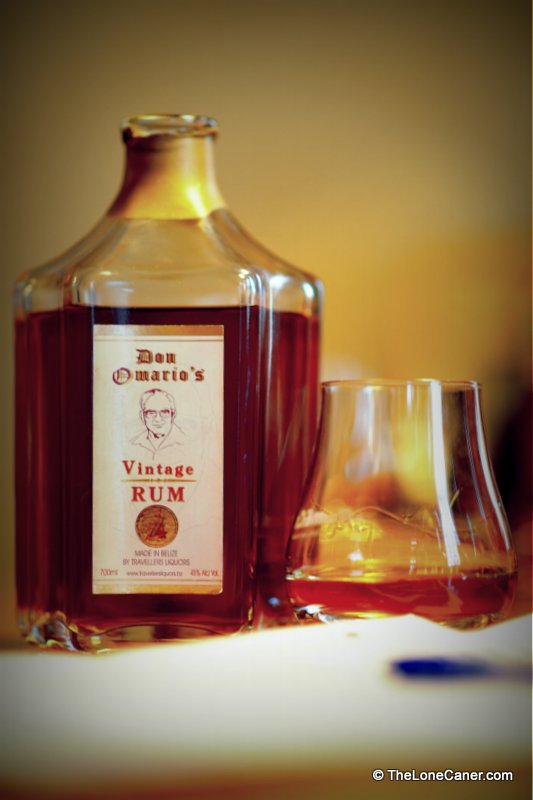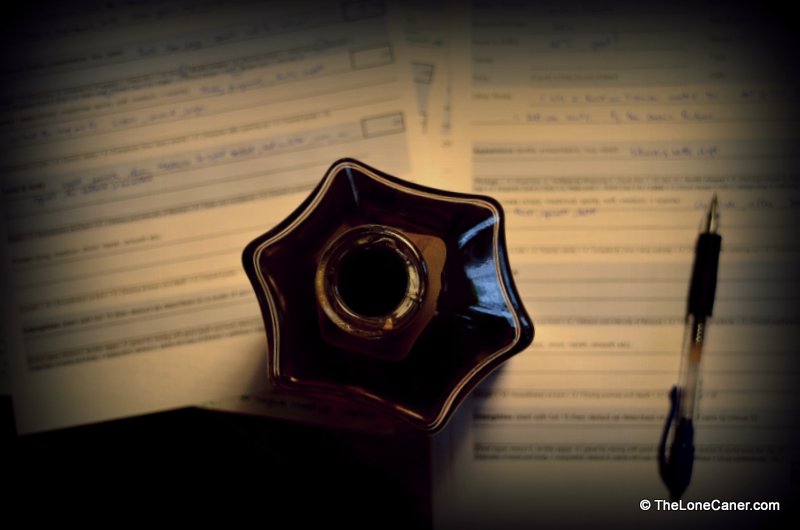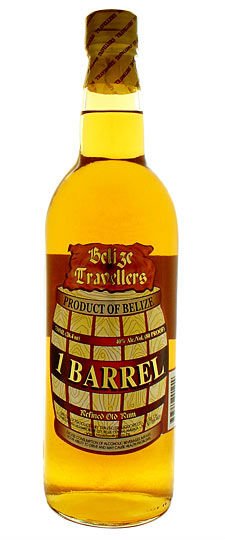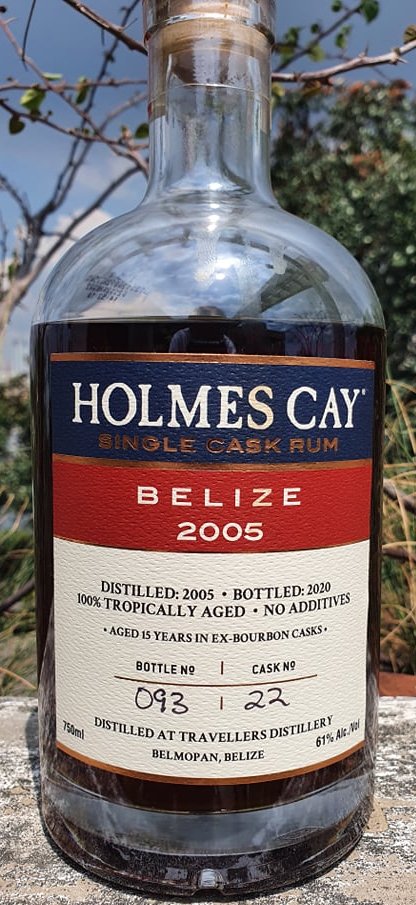 Belize, until recently, had somewhat withdrawn from the epicenter of avant-garde and popular rum culture. Traveller’s, the main distillery in the country, produced soft Spanish-heritage-style rums like the One-Barrel, Three-Barrel and Five-Barrel rums and the excellent Don Omario (not sure if it remains in production), yet it was overtaken by the full-proof pot-still ethos that have of late almost defined quality modern rums for the deep diving aficionados and connoisseurs. That’s not to say Belize’s rums weren’t popular – they were, and remain so, especially to those who knew about them and liked the style. It’s just that in terms of wider appreciation and “must-have” collectors’ hunger, constant innovation, new expressions, relentless marketing and attendance at festivals the world over, Belize’s rums didn’t keep pace, and have lapsed into a sort of quiet somnolescence.
Belize, until recently, had somewhat withdrawn from the epicenter of avant-garde and popular rum culture. Traveller’s, the main distillery in the country, produced soft Spanish-heritage-style rums like the One-Barrel, Three-Barrel and Five-Barrel rums and the excellent Don Omario (not sure if it remains in production), yet it was overtaken by the full-proof pot-still ethos that have of late almost defined quality modern rums for the deep diving aficionados and connoisseurs. That’s not to say Belize’s rums weren’t popular – they were, and remain so, especially to those who knew about them and liked the style. It’s just that in terms of wider appreciation and “must-have” collectors’ hunger, constant innovation, new expressions, relentless marketing and attendance at festivals the world over, Belize’s rums didn’t keep pace, and have lapsed into a sort of quiet somnolescence.
Two things have changed that view and helped raise the visibility of the country, more than a little. One was the establishment of the Copalli Distillery in 2016: this was (and is) a small, ecologically-minded organic rum maker utilizing sugar cane juice, and their small production outturn, while not reinventing the wheel, has received plaudits and good press (I have not tasted any…yet). In today’s world where environmental concerns, organic agriculture and sustainable practices are considered selling points and hallmarks of quality, the establishment of this distillery immediately created attention.
The other was a development in the USA, home of the micro-distilling culture that prides itself in starting up small outfits that produce every spirit known to man on their small stills (and are at pains to advertise a few that aren’t). In the US, strangely enough, and in spite of the success of Ed Hamilton, almost no indie bottler has ever bothered to establish itself as a serious endeavor to take on the Europeans: at best it’s an occasional one-off bottling that appears, like the Stolen Overproof — and yet that strikes me as really peculiar, given the proximity of the Caribbean and Central American distilleries, and the opportunities this offers. In 2019, however, somebody didn’t wait for the second knock: a new company called Windyside Spirits was established by New Yorker Eric Kaye and his wife, specifically to support their Holmes Cay brand, and they went in with the intention of being a serious independent bottler in their own right.
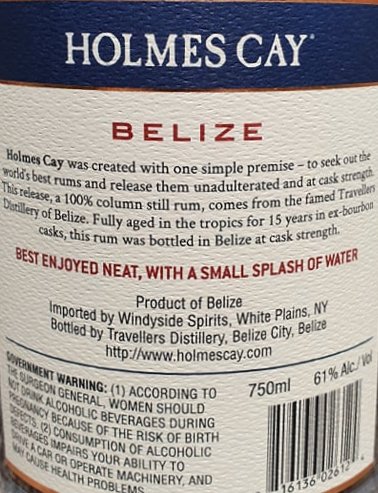 What does that have to do with Belize? Well, in their first year (2019) Holmes Cay tentatively released a Barbados Foursquare rum (selected so they could do a first bottling that would “knock it out of the park”) and it was so well received that they followed that up in 2020 with four more rums: from Guyana, Barbados (again), Fiji…and Belize. By now Barbados, Guyana and even Fiji were already well known and Belize was something of an outlier, but the combined street cred and positive word of mouth attendant on these releases certainly spilled over…and that small Central American nation was again being seriously considered as a rum maker of some note.
What does that have to do with Belize? Well, in their first year (2019) Holmes Cay tentatively released a Barbados Foursquare rum (selected so they could do a first bottling that would “knock it out of the park”) and it was so well received that they followed that up in 2020 with four more rums: from Guyana, Barbados (again), Fiji…and Belize. By now Barbados, Guyana and even Fiji were already well known and Belize was something of an outlier, but the combined street cred and positive word of mouth attendant on these releases certainly spilled over…and that small Central American nation was again being seriously considered as a rum maker of some note.
This rum was from the aforementioned Travellers Distillery, and the exact route it used to get to the US, whether via a broker and Europe or directly to the US, is unknown (the rear label suggests it was completely done in Belize). But clearly it went a long way, navigated the torturous byzantine byways of US regulations, and paid a lot of taxes, which is why it retails for a hundred bucks and more even in the US and that by itself might be an issue…to say nothing of the 61% ABV proof point, which would not recommend it to the casual fan of Captain Morgan or Bacardi. It is a column still product deriving from molasses, was aged from 2005 to 2020 in ex Bourbon casks and was released at full proof and without any additives or messing around.
What this produced, then was a dark reddish amber rum of some character. Nosing it for the first time was quite a kinetic experience: it reminded me initially of a full proof Demerara rum: caramel, toffee, molasses, marshmallows (slightly singed), vanilla, mocha, and coconut shavings. It took something of a detour by adding sly background notes of acetones, nail polish, a lemon zest, coca cola and even some licorice, and overall the impression was one of solid, well-aged, not-overly-complex rum of consistent quality.
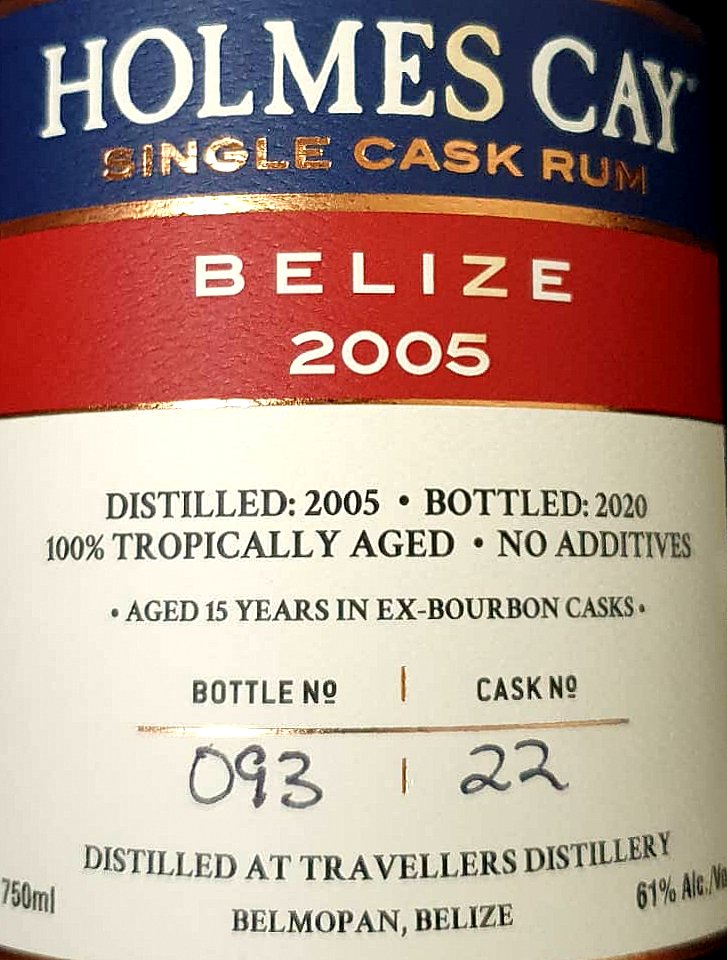 The palate was (somewhat to my surprise) even better, though I was left regarding it rather dubiously and scribbling in my notes whether this was a Demerara or not and whether anything had been added. Some woody tannins were in evidence, slightly bitter, plus coffee grounds, licorice, damp tobacco, caramel, molasses and brown sugar – I mean, it wasn’t, quite, but it sure had elements that a Guyana PM- or Enmore-lover would not be unhappy with. It also felt rather sweet (though not cloying, just a sort of background sense), and had a good bit of dark fruit action developing over time: very ripe dark cherries, black grapes, bananas, and dark unsweetened chocolate, all of wich went well with the toffee-caramel-molasses combo that had started the palate party.Ther finish, as befitted such a strong drink, was nicely long, mostly licorice, chocolate, coffee, and some tannins, a quietening down of that nose and palate, though one that did not add anything new, just toned it all down as it closed things off.
The palate was (somewhat to my surprise) even better, though I was left regarding it rather dubiously and scribbling in my notes whether this was a Demerara or not and whether anything had been added. Some woody tannins were in evidence, slightly bitter, plus coffee grounds, licorice, damp tobacco, caramel, molasses and brown sugar – I mean, it wasn’t, quite, but it sure had elements that a Guyana PM- or Enmore-lover would not be unhappy with. It also felt rather sweet (though not cloying, just a sort of background sense), and had a good bit of dark fruit action developing over time: very ripe dark cherries, black grapes, bananas, and dark unsweetened chocolate, all of wich went well with the toffee-caramel-molasses combo that had started the palate party.Ther finish, as befitted such a strong drink, was nicely long, mostly licorice, chocolate, coffee, and some tannins, a quietening down of that nose and palate, though one that did not add anything new, just toned it all down as it closed things off.
So for a rum chanelling the Spanish-heritage style (short fermentation, high ABV off a column still, flavour primarily by ageing), a bit on the odd side, but very nice; rums made in this way (even if by a former British colony) issued at proof have always excited my curiosity, perhaps because there are so few of them. That’s not to say this one works on all levels or fires on all cylinders because compared to others it is not quite as complex – the proof helps it get past that hurdle in a way that would not have succeeded as well as it did, had it been, say 40%. And then there are the taste and dark colour, which excite some doubts.
But I make that remark as a person who has tried more rums from around the world than most. For an American rum audience used slim pickings locally and to staring wistfully across the European rum shops, getting a rum like this must have been like a blast to usher in the zombie apocalypse. No additives, limited outturn, a tropical age statement of a decade and a half, single cask, and…was that really cask strength? The Belize 2005 took all the dials that rum-makers from Central and Latin America had consistently and puzzlingly left almost unturned for decades and spun them savagely around to “11”. As with the others in the line, the reviews it garnered were almost uniformly positive: Rum Revelations scored it 88 (“a flavour bomb”), Flaviar gave it a solid 8.0/10, Paste’s Jim Vorel penned an enthusiastic (if unscored) review, Rum Ratings’ three voters all said 9/10 and Rum-X had one reviewer award it 98 points.
All of which probably says more about the strength of the desire North Americans have for rums that are better than the standard blah they too often have to put up with, than the intrinisc worth of the rum when looked at dispassionately. But still: the Belize 15YO shows that there is something better than ten-buck supermarket fodder available — and while it may be pricey, it is worth it, and demonstrates that there is indeed a market for indie bottlings made by Americans, for their side of the Atlantic.
(#923)(84/100) ⭐⭐⭐½
Other Notes
- The reputation Holmes Cay developed with this and other rums almost instantly led to two episodes on the podcast RumCast (#2 for the Barbados, and #30 for the Fiji) and blurbs, reviews and articles in various industry fora like Paste, GotRum, Drinkhacker, Rum Lab, Wine Enthusiast, Robb Report, Forbes, and Esquire (to name just a few). No European indie ever got that kind of press so fast, ands it points out – to me, at any rate – a huge unmet demand for the sort of rums they make and the model they use to produce them.
- In his review on Rum Revelations, Ivar also remarked on the caramel and winey taste and wondered if Travellers had monkeyed around with it. I don’t doubt HC themselves were completely above board when they said they didn’t, but on the other hand, they took what they got on faith, so who knows?
- Thanks to John Go, who sent me a sample.
